Exposure for generations: PFAS in the environment
PFAS chemicals end up in the environment and pollute it for generations. The substances in this huge class of substances accumulate in the environment and many may accumulate in the human body. Some PFAS are linked to diseases such as cancer, metabolic disorders and immune damage or negative effects on fertility and babies in the womb. Transition to safe alternatives is therefore urgently needed. We provide the facts on exposure to this problematic class of substances – and shed light on what Empa, Eawag and the Ecotox Center are doing about it.
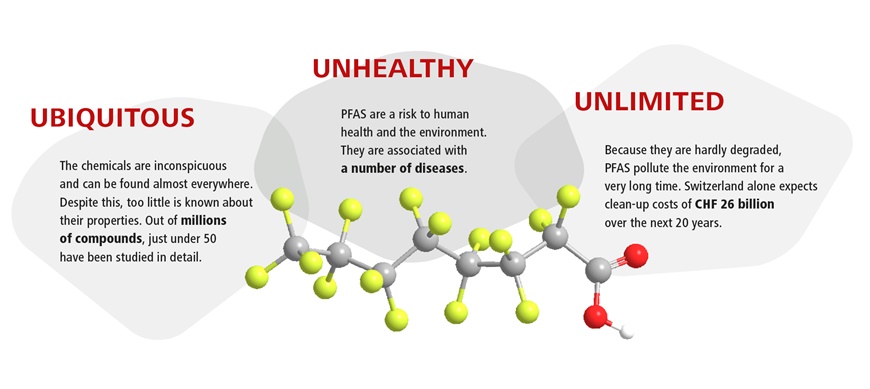
What are PFAS?
PFAS are a large and diverse group of chemical compounds that contain fully fluorinated carbons. They are synthetically produced molecules that have a wide range of unique properties. As PFAS are extremely stable, they are also known as “Forever Chemicals”.
In fact, their chemical and thermal stability is record-breaking and makes PFAS extremely interesting for technical applications in a wide range of products. Their useful properties include being heat-resistant and repelling water, grease and dirt. Due to their many positive properties, this class of substances may currently be difficult to replace with conventional materials in specific applications.
Why are PFAS hazardous?
PFAS are released into the environment during production, use and disposal. The substances are hardly broken down in nature and sometimes remain stable for hundreds of years. As a result, PFAS accumulate in the environment. Many PFAS spread particularly widely in water and through the air. They enter the soil and the food chain because they are easily absorbed by organisms. For this reason, these substances from the PFAS family should no longer be released into the environment; some of these substances are already banned.
People come into contact with PFAS mainly through food. In the body, many substances accumulate in internal organs. This poses health risks, and some PFAS are indeed associated with various diseases. For instance, harmful effects on the liver, kidneys and immune system are known. Some substances are also carcinogenic or impair fertility and the development of babies in the womb.
How can I avoid PFAS in everyday life?
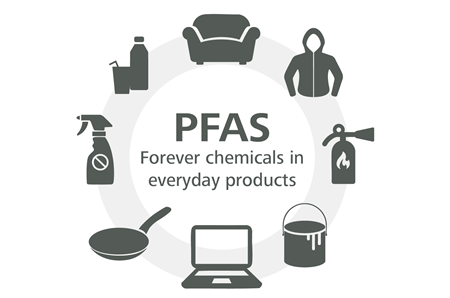
- Avoid PFAS-containing products such as Teflon-coated frying pans and stain-repellent outdoor wear.
- Use reusable containers instead of disposable packaging.
- Fast food and frozen products such as ready-made pizza can also be contaminated with PFAS due to their processing and disposable packaging.
- Avoid cosmetics with “fluoro” in the list of ingredients and try to avoid water-resistant cosmetics as much as possible.
What are Empa, Eawag and the Ecotox Center doing?

Researchers at Empa, Eawag and the Ecotox Center are working on a variety of approaches to solve the problem of “Forever Chemicals”. For example, they are developing reliable analytical methods to measure known and (as yet) unknown PFAS and are investigating the transfer of PFAS from the environment into the food chain. Other teams are clarifying the degradation of PFAS in the environment and looking for innovative technologies to remove the substances from contaminated areas. Materials scientists are developing safe and sustainable materials so that PFAS can be replaced in everyday products. And finally, teams of experts support public authorities with further education and the development of threshold values.
Pocket Facts 02
(In)famous Allrounder:
PFAS – Forever Chemicals
Download the brochure
Markus Zennegg
Empa, Analytical Center
Phone +41 58 765 4615
Dr. Zhanyun Wang
Technology and Society
Phone +41 58 765 7761
Dr. Christa McArdell
Eawag, Environmental Chemistry
Phone +41 58 765 5483
Dr. Alexandra Kroll
Ecotox Center, Risk Assessment
Phone +41 58 765 5487
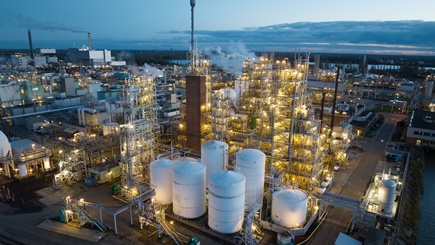
How do PFAS get into the environment?
Origin and distribution
Industry uses more than 10,000 different registered PFAS compounds. Researchers are developing reliable analytical methods to measure PFAS in very low concentrations or as yet unknown PFAS, and are investigating the transfer of PFAS into drinking water and the food chain.
More information

What damage do PFAS cause?
Effects on humans and the environment
PFAS are hazardous to human health and the environment and are associated with numerous diseases. Empa, Eawag and the Ecotox Center are working to better understand these effects on humans, our drinking water and the entire biosphere.
More information
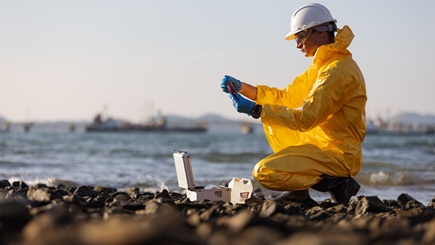
How can PFAS be eliminated?
Methods for removal
The remediation of PFAS-contaminated soil and water is complex and costly. Researchers are therefore developing innovative technologies to efficiently and sustainably remove PFAS from the environment and prevent them from getting there.
More information
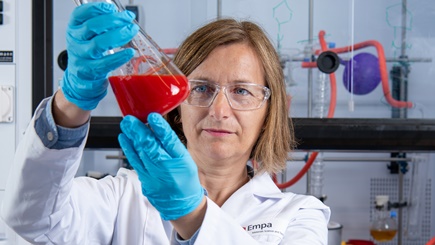
How can PFAS be replaced?
Alternative materials
PFAS are found in countless products, as they are water-, grease- and dirt-repellent and heat-resistant, for example. Interdisciplinary teams are therefore working on developing safe materials that can replace PFAS but keep the beneficial properties without harming people or the environment.
More information
